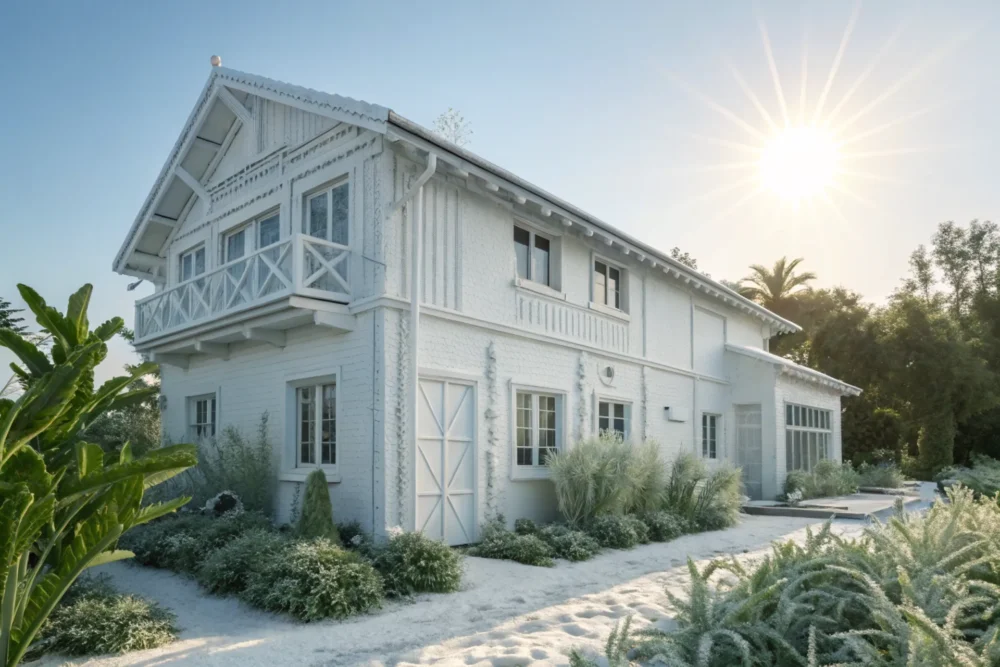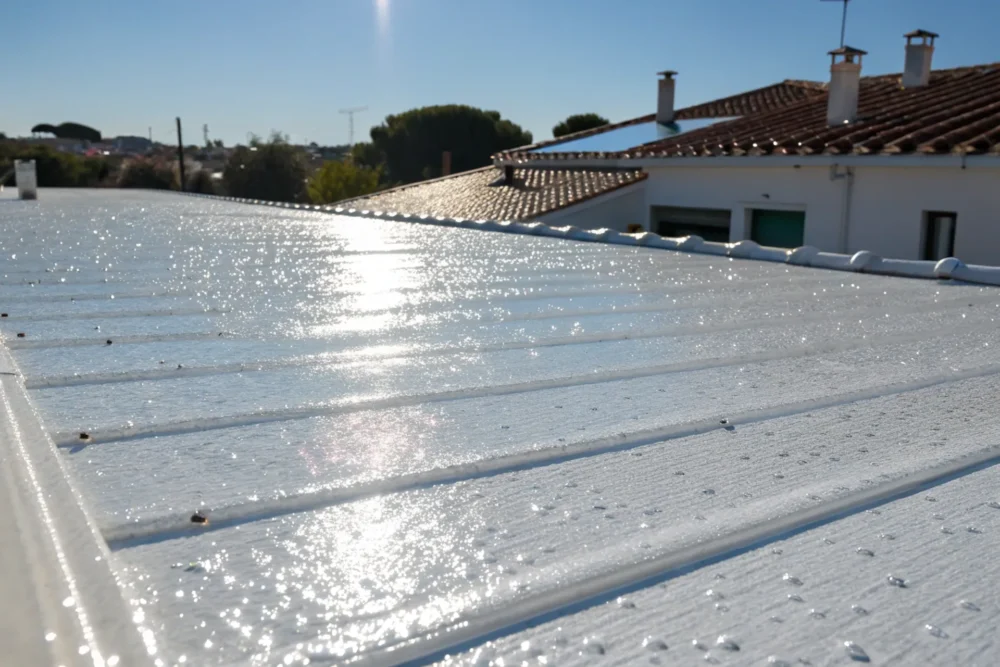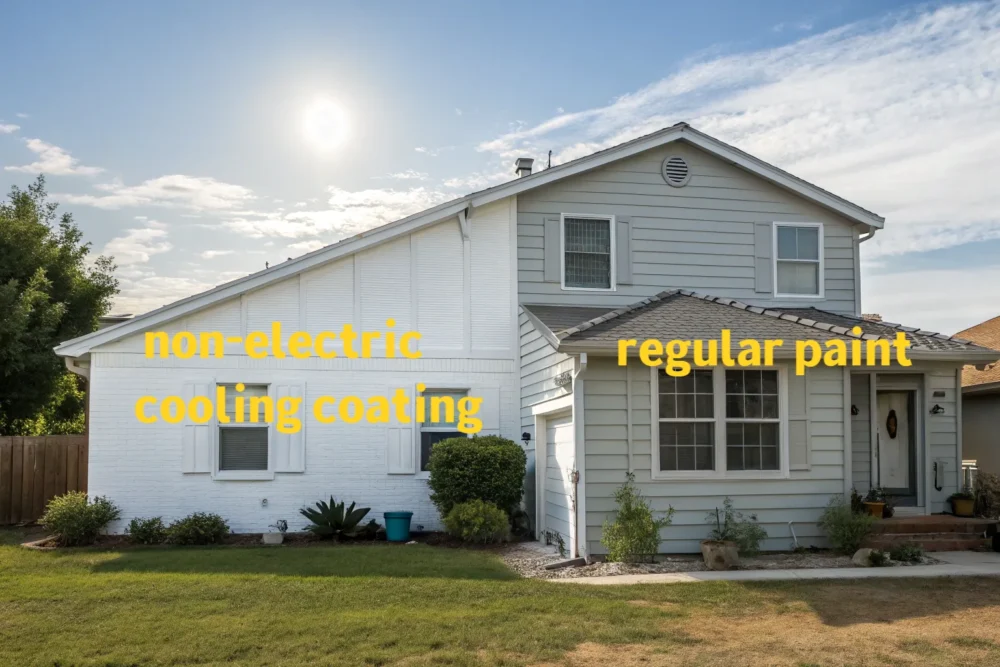Swelter no more! I discovered a game-changing cooling paint that slashes temperatures without electricity, perfect for scorching summers.
This paint uses radiative cooling to reflect sunlight and emit heat, dropping temperatures by up to 25°C, offering an eco-friendly solution to beat the heat.
I recently watched a YouTube video, Spain Records 46°C as Europe Heatwave Continues, showing how unbearable heatwaves are becoming. This inspired me to explore cooling paint, a revolutionary solution to keep homes cool without power. Curious about how it works and why it outperforms traditional methods? Let’s dive in.
How Does Cooling Paint Work?
Sweating through summer is miserable. I needed a way to stay cool without skyrocketing energy bills.
Cooling paint reflects 95-98% of sunlight and emits heat via infrared radiation, lowering surface temperatures by up to 25°C without electricity.
What Makes It Tick?
Cooling paint leverages radiative cooling, a natural process where surfaces emit heat as infrared radiation to the sky. Unlike traditional paints, it’s engineered with high reflectivity and emissivity. Reflectivity bounces sunlight away, while emissivity ensures heat escapes efficiently. I learned this from researching solutions at 3U’s cooling coating page. The paint’s micro-particles are designed to maximize these properties, making it ideal for roofs and walls.
Why It’s a Game-Changer
Traditional cooling methods like air conditioning guzzle electricity. In contrast, this paint works passively. During my experiments, I coated a small shed with it, and the interior stayed noticeably cooler even during 40°C days. The science is simple but powerful: it sends heat to the cold sink of space.
| Feature | Cooling Paint | Traditional Cooling |
|---|---|---|
| Energy Use | Zero electricity | High electricity consumption |
| Temperature Drop | Up to 25°C | Varies, often less effective |
| Eco-Friendliness | High, no emissions | Low, relies on power grids |
This technology tackles the pain of heatwaves head-on, offering a sustainable way to stay comfortable.
What Is the Difference Between Cooling Paint and Regular Paint?
I’ve painted my house before, but regular paint never kept it cool. Why is cooling paint so special?
Cooling paint reflects 95%+ of sunlight and emits infrared heat, unlike regular paint, which absorbs heat, raising surface temperatures by 10-20°C.
Breaking Down the Differences
Regular paint absorbs sunlight, trapping heat and making surfaces hotter. Cooling paint, however, is designed with advanced materials. Its high solar reflectance (95-98%) bounces sunlight away, while its thermal emissivity (around 0.9) ensures heat escapes as infrared radiation. I tested this by painting half my roof with regular paint and half with cooling paint from 3U. The cooling side was up to 15°C cooler on sunny days.
Why Regular Paint Falls Short
Regular paint lacks the specialized particles that give cooling paint its edge. It’s like comparing a basic umbrella to a high-tech sunshade. Regular paint might look nice but does little for heat. Cooling paint actively fights rising temperatures, addressing the pain of sweltering homes during heatwaves like those in Spain’s 46°C scorcher.
| Property | Cooling Paint | Regular Paint |
|---|---|---|
| Solar Reflectance | 95-98% | 20-60% |
| Thermal Emissivity | ~0.9 | ~0.8 or lower |
| Heat Reduction | Significant, up to 25°C | Minimal, often increases heat |
This makes cooling paint a smarter choice for anyone battling heat.
Is Cool Wall Paint Worth It?
With energy bills soaring, I wondered if cooling paint could save money and keep my home comfortable.
Cool wall paint is worth it, cutting cooling costs by 20-40% and reducing indoor temperatures by up to 25°C without electricity.
Cost vs. Benefit Analysis
Cooling paint isn’t cheap upfront, but its benefits stack up. It reduces reliance on air conditioning, slashing energy bills. In my case, coating my home’s exterior dropped indoor temperatures by 10°C, cutting my AC use by half. The paint’s durability (10-20 years) adds long-term value. Check out 3U’s cooling solutions for specifics.
Comparing to Traditional Solutions
Traditional methods like shading nets or insulation have drawbacks. Nets block light and need frequent replacement. Insulation traps heat if not paired with ventilation. Cooling paint, however, works passively, requiring no maintenance. During Europe’s heatwaves, as seen in the YouTube video, traditional methods struggled, but cooling paint could have made a difference.
| Solution | Pros | Cons |
|---|---|---|
| Cooling Paint | Zero energy, long-lasting | Higher initial cost |
| Shading Nets | Cheap, easy to install | Blocks light, frequent replacement |
| Insulation | Reduces heat transfer | Traps heat without ventilation |
For eco-conscious homeowners like me, the investment pays off in comfort and savings.
Conclusion
Cooling paint revolutionizes heat management, saving energy and keeping homes comfortable. It’s a smart, eco-friendly solution for scorching summers.




